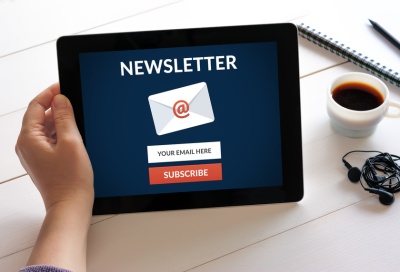A stand-alone newsletter is a one-off message that is used to attract attention for special promotions and sales. This has a number of uses, so read on to find out how to make the most of the stand-alone newsletter. A stand-alone newsletter is simply a one-off message as used in the context of email marketing.
Email marketing is of course the process of marketing a business through emails. Often, this will involve getting people to sign up to a list and then sending them news about your business, along with other useful information and entertainment that might encourage them to keep reading and to keep opening your future correspondence (if it’s all just marketing, then chances are they won’t want to keep reading in future!).
But with a stand-alone newsletter, you are sending a message out of sequence – possible with no regular communication involved. This has some advantages:
- The ROI is low – if you are only sending one message, then you don’t have to invest a lot of time writing regular emails!
- It will stand out – a ‘one off’ email will stand out significantly as compared with multiple emails
- You may make it past spam and promotions – you might stand a better chance of getting into the main inbox if your email is a ‘one off’
Generally, this will be used for special promotions, deals, launches and new products.
Email Marketing 101
Whether you are using stand-alone emails or any other type of email marketing, it is important to understand what makes this format work.
The first and most important thing to consider with email marketing is that the emails are solicited. Emailing large numbers of people without first gaining their permission though very easy to do with a lot of popular software and seemingly a tempting prospect is not only illegal but will also understandably irritate those on the receiving end. We all know what it’s like to receive tons of unwanted junk mail so don’t contribute to that or your company’s name will be synonymous with receiving rubbish. In other words then, you need to get your recipients to actively agree to receive your emails. Once they’ve signed up you then add their addresses to a ‘mailing list’ from which you send each of your newsletters or (cleverly disguised) adverts. Obviously, this can prove difficult but then that’s where the marketing challenge lies.
And this is STILL TRUE for stand-alone emails. You can buy emails, but these will be far less likely to get opened. The best way to get permission for one-off messages is to promote a new exciting product or deal and then have the user sign up to get news about it.
But there are other ways too.
How to Get Permission for Your Emails
One simple way to get your mailing list is to offer something free as an incentive. For example you might give away free e-books to anyone who signs up. Though you might be loathe to give away something you’ve spent a long time writing, this is an initiative that will pay for itself in the long run. You can also use this method as a way to get them to accept your e-mail address to ensure your newsletters aren’t caught by their spam filter. Alternatively, you can get them to opt in or out of your newsletter while signing up to another part of the site such as a message board. The best case scenario however is that your visitors simply choose to join your mailing list because they value the content of your site and want to be updated.
